A man tests a set of radio frequency-triggered, color-changing light bulbs. A woman adjusts a small clock that looks like three electric sockets. Another man puts the finishing touches on a roach trap made from traditional paper cutting techniques to resemble the miniature houses used in ceremonies to comfort the spirits of the dead. These three were among several dozen designers putting the finishing touches on their displays for the second annual Taiwan Designers’ Week (台灣設計師週), which opened last Saturday and runs through Friday.
This year’s main exhibition is divided into eight sections at the Xinyi Public Assembly Hall (信義公民會館). There are also one exhibition section each at Taipei Artist Village (台北國際藝術村) and at the XueXue Institute (學學文創志業) in Neihu.
The all-volunteer event was initiated last year by Taiwan Designers’ Web (台灣設計師連線, TWDW), a network of designers from across the country, many of whom work as industrial designers making products for large business and feel their creativity is stifled at work.
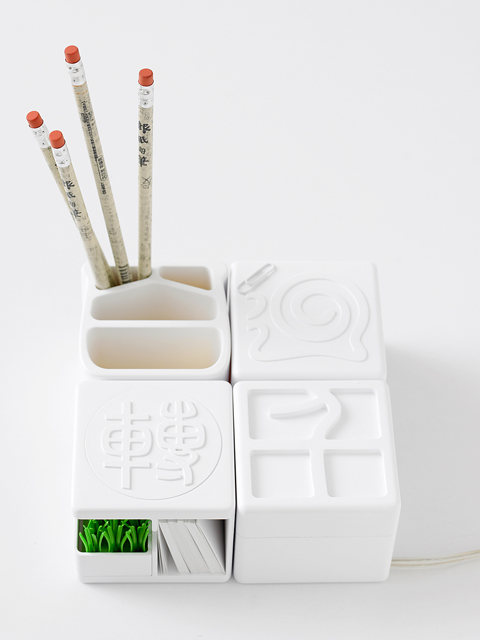
PHOTO COURTESY OF TAIWAN DESIGNERS’ WEB
With more than 250 participating groups and individual designers and 10 exhibition sections this year, compared to 100 entrants and seven sections last year, Taiwan Designers’ Week is clearly expanding. Last year’s fair only featured works by industrial and lifestyle product designers, but this year’s includes fashion and jewelry designers and film directors, as well as visual and graphic designers. Each of the 10 sections is curated by a loosely organized group and organized around concepts such as “On and Off,” “The Wall,” and “The Scholar’s Study.”
“Some [of this year’s] designs cost NT$100,000 or NT$300,000 [to make],” said Joyce Chou (周湘雲) the event’s executive director and a design researcher for Pega Design & Engineering. Many designers keep their participation a secret from their employers, she noted. Some took time off from work to prepare; others have bosses who would rather not see their employees’ energies divided between work and side projects.
One of last year’s products, a collection of benches created under the aegis of the design collective Dian Shin Refreshment (點心設計), received an iF product design award and has since been featured at the prestigious International Furniture Fair of Milan.
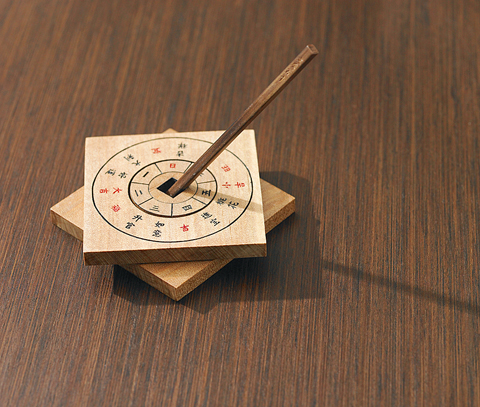
PHOTO COURTESY OF TAIWAN DESIGNERS’ WEB
This year, Dian Shin Refreshment (點心設計) has invited 50 designers to make stationary inspired by the aesthetics of China’s Song and Qing dynasties. The results include a pen holder-cum-sundial that also tells your fortune for the day, and a bookshelf that looks like a window frame from a pre-modern wooden house.
The On and Off concept was conceived of as an attempt to get participating designers thinking out of the box, as it were.
“We try to answer the question of whether or not we can escape from binary logic and create designs that are more in tune with the nuanced changes in human emotions and senses,” explained Harry Wu (吳佳勳), the On and Off section’s curator and a designer for Pega Design and Engineering.
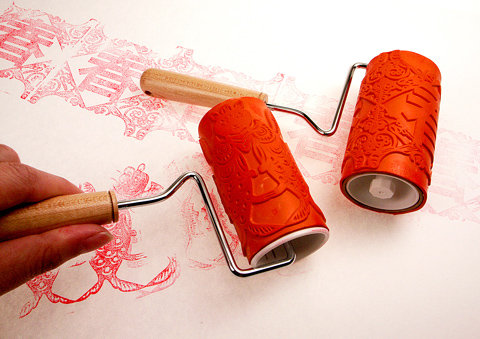
PHOTO COURTESY OF TAIWAN DESIGNERS’ WEB
Items in this section include Tech Tap, a faucet-shaped device that pours light instead of water into two “cups” and emits music that sounds like trickling water. The glasses are rigged with LED lights and “receive” the music and light as if they were tangible materials. Another interesting invention is a keyboard bearing the unintelligible characters of a “Martian language” (火星文). Visitors can type messages that are displayed on a monitor and can be printed out as a sticker.
The Wall section — the underlying concept of which was to get designers into the habit of thinking not in terms of discrete designs but relationships with space and the environment — includes a project titled Hang Up, which is a phone that only hangs up when it’s hung on a wall, and a selection of stickers that transform ugly cracks on a wall into works of art.
For exhibit curator Alan Huang (黃偉倫), Taiwan Designers’ Week offers a much-needed chance for local designers to develop their own individual identities.
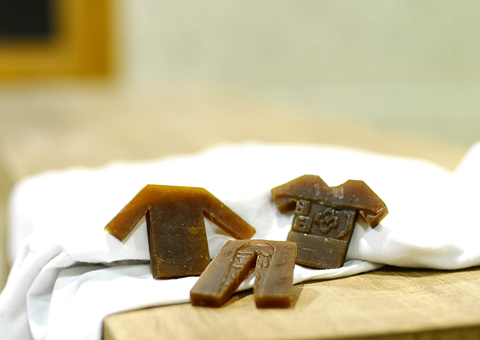
PHOTO COURTESY OF TAIWAN DESIGNERS’ WEB
“The world of design needs stars — stars with strong personal viewpoints,” said Huang, adding that the design industry in Taiwan is still immature but will hopefully explode onto the international stage in the near future.
From July 7 to July 9, guided tours will be available for the eight sections at the Xinyi Public Assembly Hall. These include Xrange (十 一事務所), Asus and Opening United (打開聯合).
For those who want to take one of the designs home, several popular items from last year’s exhibition are available for purchases at 7-Eleven stores. For more information, go to the event’s bilingual site at www.designersweek.tw.
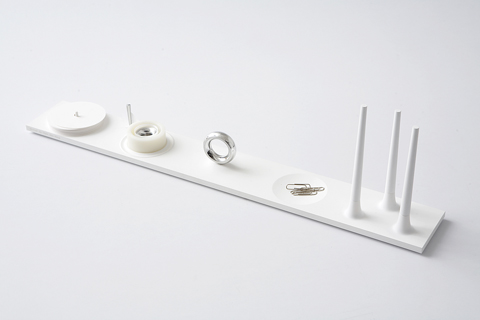
PHOTO COURTESY OF TAIWAN DESIGNERS’ WEB

PHOTO COURTESY OF TAIWAN DESIGNERS’ WEB
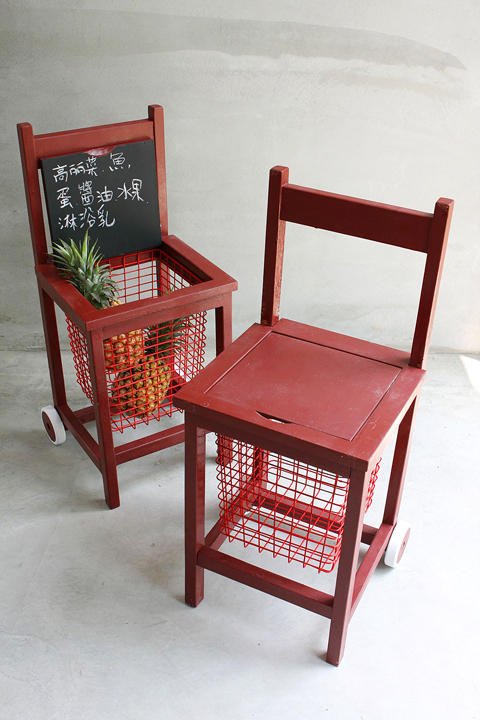
PHOTO COURTESY OF TAIWAN DESIGNERS’ WEB

On April 26, The Lancet published a letter from two doctors at Taichung-based China Medical University Hospital (CMUH) warning that “Taiwan’s Health Care System is on the Brink of Collapse.” The authors said that “Years of policy inaction and mismanagement of resources have led to the National Health Insurance system operating under unsustainable conditions.” The pushback was immediate. Errors in the paper were quickly identified and publicized, to discredit the authors (the hospital apologized). CNA reported that CMUH said the letter described Taiwan in 2021 as having 62 nurses per 10,000 people, when the correct number was 78 nurses per 10,000

As Donald Trump’s executive order in March led to the shuttering of Voice of America (VOA) — the global broadcaster whose roots date back to the fight against Nazi propaganda — he quickly attracted support from figures not used to aligning themselves with any US administration. Trump had ordered the US Agency for Global Media, the federal agency that funds VOA and other groups promoting independent journalism overseas, to be “eliminated to the maximum extent consistent with applicable law.” The decision suddenly halted programming in 49 languages to more than 425 million people. In Moscow, Margarita Simonyan, the hardline editor-in-chief of the

Six weeks before I embarked on a research mission in Kyoto, I was sitting alone at a bar counter in Melbourne. Next to me, a woman was bragging loudly to a friend: She, too, was heading to Kyoto, I quickly discerned. Except her trip was in four months. And she’d just pulled an all-nighter booking restaurant reservations. As I snooped on the conversation, I broke out in a sweat, panicking because I’d yet to secure a single table. Then I remembered: Eating well in Japan is absolutely not something to lose sleep over. It’s true that the best-known institutions book up faster

Though the total area of Penghu isn’t that large, exploring all of it — including its numerous outlying islands — could easily take a couple of weeks. The most remote township accessible by road from Magong City (馬公市) is Siyu (西嶼鄉), and this place alone deserves at least two days to fully appreciate. Whether it’s beaches, architecture, museums, snacks, sunrises or sunsets that attract you, Siyu has something for everyone. Though only 5km from Magong by sea, no ferry service currently exists and it must be reached by a long circuitous route around the main island of Penghu, with the